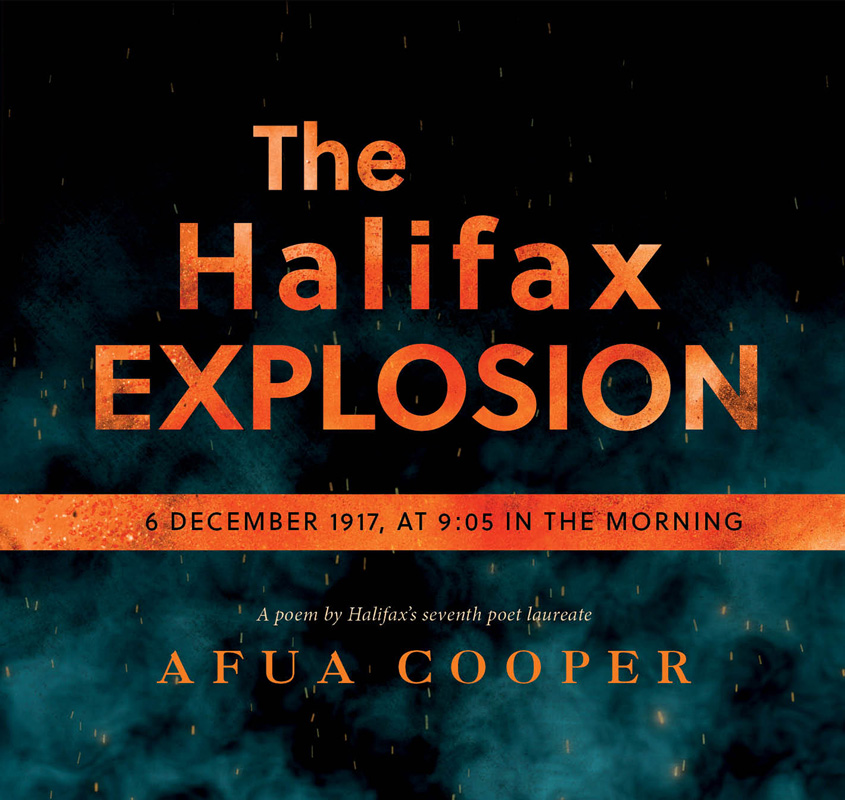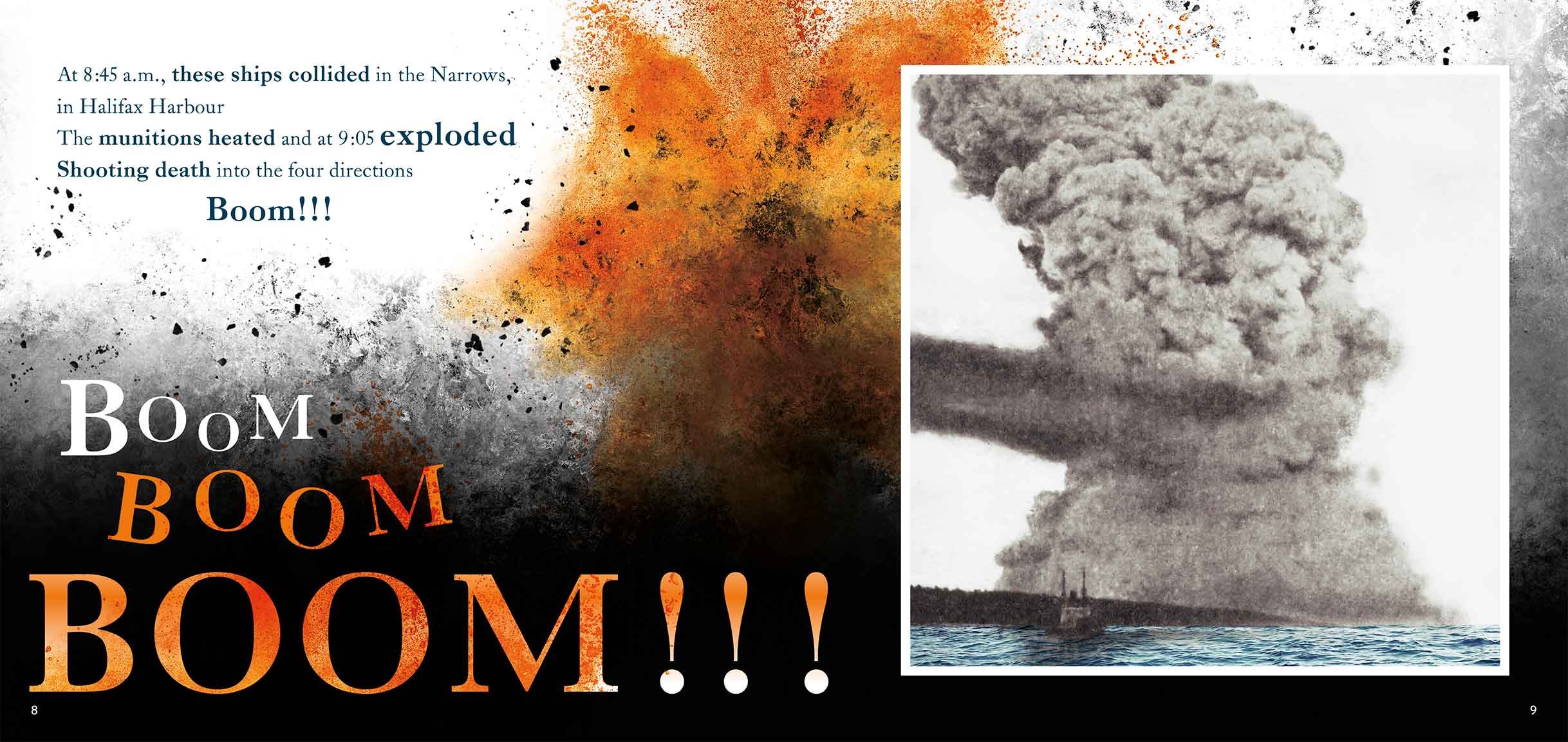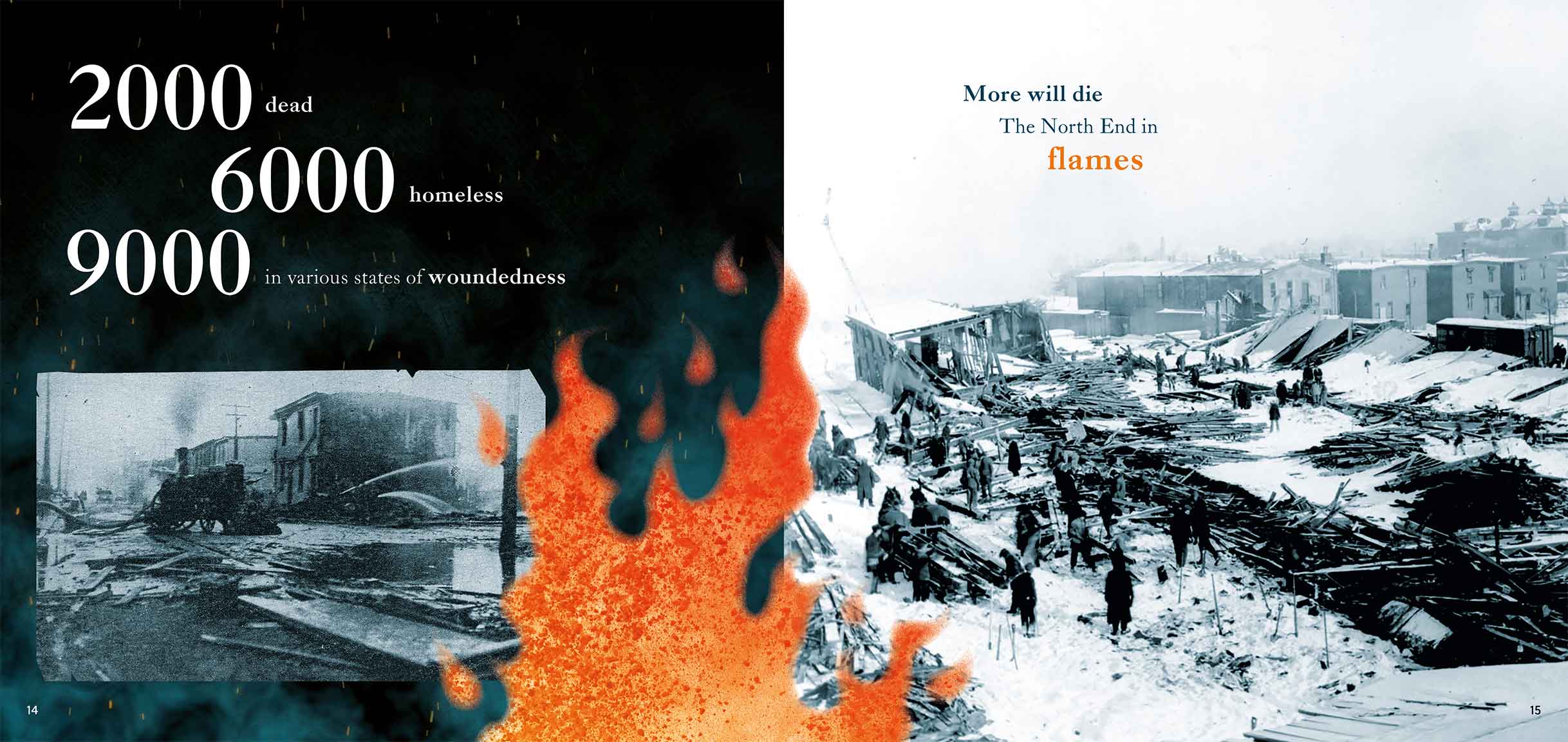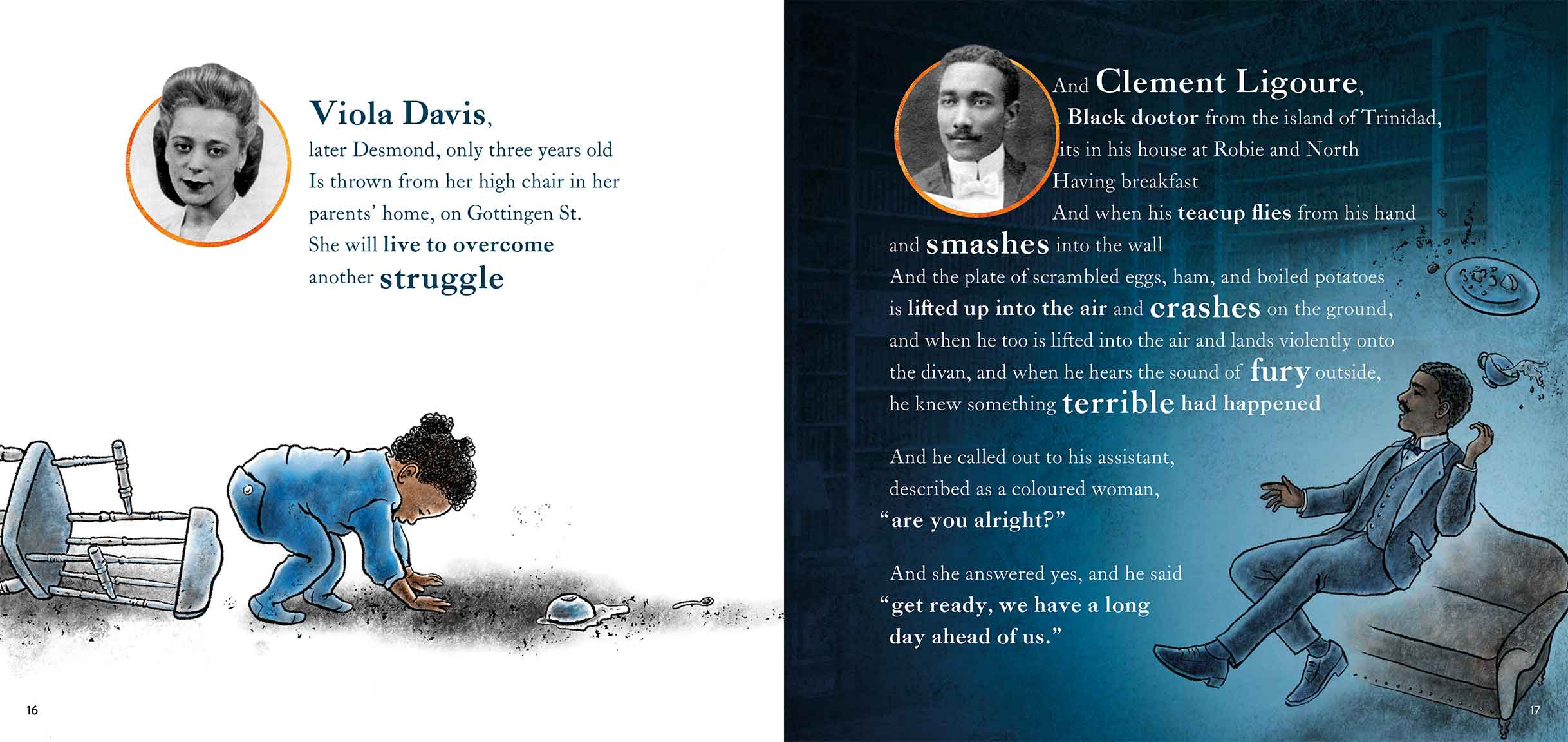The Halifax Explosion
Written by Dr. Afua Cooper
Illustrated by Rebecca Bender
RECOMMENDED BY GLOBE AND MAIL
The Halifax Explosion is a poem written by Halifax’s seventh poet laureate, Dr. Afua Cooper. It reveals dramatically what happened on 6 December 1917 at 9:05 when two ships carrying munitions and war supplies collided in the Halifax Harbour. The poem shows the tragic toll the resulting explosion and fire took on the residents of Halifax and the surrounding area, which stretched all the way north to Africville. Dr. Cooper commemorates the Halifax Explosion through verse and highlights the experiences of the Black Haligonians in this disaster. Her powerful words are magnified in this book with dramatic historical photographs and poignant art.
Poetry is movement, poetry is politics, it’s everything. It fires the imagination and so that excites me because in firing the imagination then we produce a new world.
—Dr. Afua Cooper
Canadian and US orders accepted here.
International orders please contact info@plumleafpress.com
$24.95
Dr. Afua Cooper is a celebrated poet, author, scholar, and historian. Her many books range across such genres as poetry, history, fiction, and children’s literature. She served as the Poet Laureate of the Halifax Regional Municipality for the 2018-2020 term and is the recipient of numerous prizes and awards. A full professor at Dalhousie University, Dr. Cooper is the foremost expert on Black Canadian history. She is the principal investigator for A Black People’s History of Canada, a project that engages in research on Black history and is accompanied by a new Black history curriculum. In 2022, for her work on Black Canadian history, Dr. Cooper was awarded the Royal Society of Canada’s J.B. Tyrell Historical Medal for Outstanding Contributions to Canadian history.
Author-illustrator Rebecca Bender is best known for her award-winning Giraffe and Bird books. her illustrations also grace the chapter books Slug Days, Penguin Days, and Duck Days. Rebecca's awards and honors include the OLA Blue Spruce Award A Cooperative Children's Book Centre best-of-the-year choice, and a Toronto Public Library best-of-the-year selection. Rebecca graduated from the Ontario College of Art and Design at the top of her class, earning the Medal for Illustration. She lives in Burlington, Ontario, with her husband and three children.
Additional information
| Weight | .36 kg |
|---|---|
| Dimensions | 22.225 × 23.495 × 1.3 cm |
| Specs | Trade, 8.75" X 9.25", 36 pages |











Crystal Sutherland –
Most people know a little about The Halifax Explosion and perhaps the name Vince Coleman from the “Heritage Minute”. Much of the aftermath of the ships Imo and Mont-Blanc colliding and exploding in Halifax Harbour on December 6, 1917, is well-documented, but more attention was paid to some aspects of the event than others. In The Halifax Explosion: 6 December 1917, at 9:05 in the Morning, Afua Cooper brings attention to the devastation experienced by marginalized communities, as well as their contributions in the aftermath, including stories like that of Dr. Clement Ligoure who ran a private clinic because, at the time, Black doctors were not allowed to work in hospitals, and, yet, he didn’t think twice about running to help those who needed medical attention, many of whom would have supported that exclusion policy.
By Cooper’s using a mix of colourful, lively drawings and historical photos, readers get the full history of the explosion through well-known photos alongside drawings depicting people and events that weren’t well recorded in the aftermath of the explosion and are often omitted from history. The text, varying in size and font, guides readers, showing them where the author would emphasize and fade when reading the text aloud. For those who prefer to read the poem without illustrations or suggested emphasis, the poem is included at the back of the book in plain text. The book ends with a historical note about how Black and Indigenous communities have often been left out or ignored in accounts of the Halifax Explosion, and how the author was intentional in focusing on these communities, bringing locations and people back into the story of the Halifax Explosion.
Cooper puts a face and name to some of those often referred to only as casualties or survivors of the Halifax explosion. By Cooper’s giving names to people lost, people like Aldora Andrews, a child who was killed, and Edward Hickey who was survived by his wife Rose and their three children, readers will better understand the full impact of the 2000 lives lost. In Cooper’s naming individuals who survived but were left with nothing or whose injuries changed their lives forever, the impact the explosion had on Halifax’s residence becomes more real, and attention is drawn to people and communities who have often been left out of the story of the Halifax Explosion.
The Halifax Explosion: 6 December 1917, at 9:05 in the Morning offers a passionate retelling of the events leading up to and after the explosion while taking time to look more closely at people who often go unrecognized in history, as well as communities that are often overlooked when recounting the damage caused by the event. Weaving archival photos and drawings together does an excellent job showing what’s recorded, along with stories about individuals who don’t get the attention they deserve. Especially poignant is the detail about how Viola Desmond, now recognized on the ten-dollar bill for her contributions as a civil rights activist working to end segregation, was thrown from her highchair in the explosion. Readers will be inspired to pause and consider how different Canada would be if Desmond hadn’t survived the explosion, and what those victims who remain nameless may have achieved had they survived.
While the images and fonts give readers a clearer picture of the Halifax Explosion and how to read the poem, having the poem in plain text at the end of the book, thereby allowing readers to add their own emphasis and draw their own images, is an excellent touch. The historical note at the end will help those familiar and unfamiliar with the Halifax Explosion better understand the importance of the poem and may inspire many to do their own research on the Halifax Explosion, and perhaps other events in Nova Scotia and across Canada where stories of individuals or communities were excluded and need illuminating.
The Halifax Explosion: 6 December 1917, at 9:05 in the Morning is passionate and thought-provoking. An engaging read, whether read in a classroom or a commemorative event or just as a personal read, The Halifax Explosion: 6 December 1917, at 9:05 in the Morning has the potential to spawn important and necessary conversations.
Highly Recommended
Reviewer:
– Crystal Sutherland (MLIS, MEd (Literacy)) is a librarian living in Halifax, Nova Scotia.
Quill and Quire –
The Halifax Explosion urges us to make remembering a conscious act. With this poem, bookended by historical notes, Cooper and Bender guide adults and kids to revisit hidden histories together.
– Quill and Quire
Helen Kubiw –
There is power in Dr. Afua Cooper’s poem of African Nova Scotians whose stories are little known and perhaps less remembered. However, remembered they should be. Dr. Afua Cooper tells us their names and about their families. She acknowledges them. The last words of her poem are “Does Halifax remember?” With her poem, they are less lost and truly commemorated.”
– Helen Kubiw, Canlit for LittleCanadians
The Globe and Mail –
Using poetry, historical documents and period photographs, Cooper details the events of one of the most devastating moments in Canadian history from the perspective of some of the Black Nova Scotians whose worlds were turned upside down that December morning.